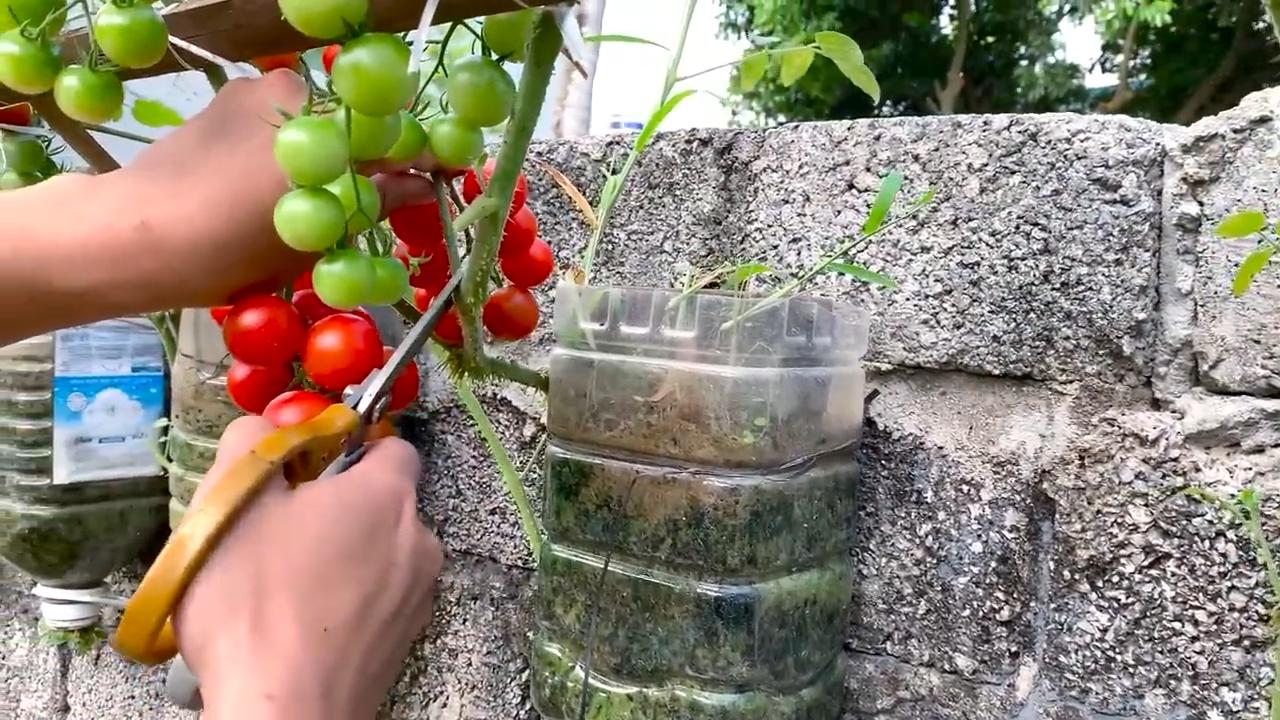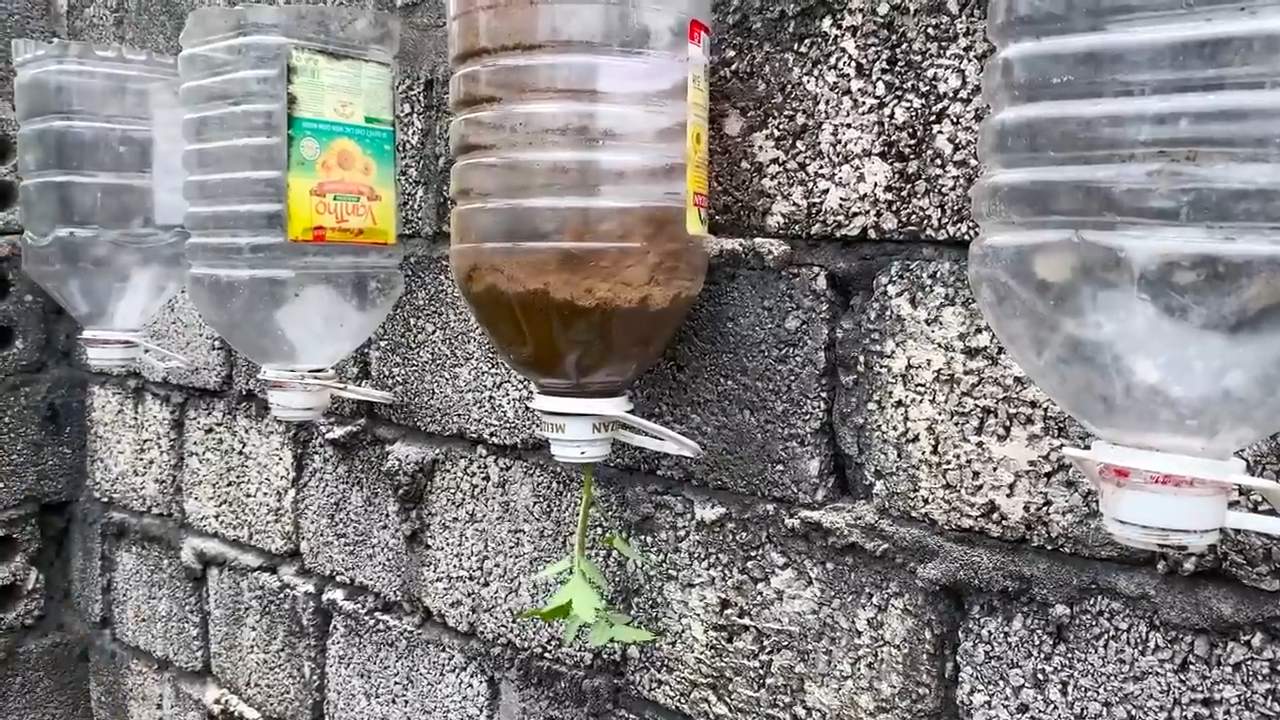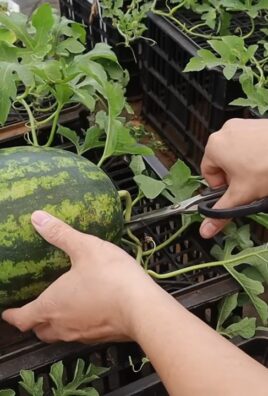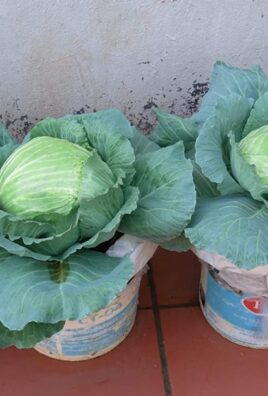Indoor Tomato Growing: Imagine plucking a sun-ripened, juicy tomato right from your own plant, even in the dead of winter! Sounds like a dream, right? Well, it doesn’t have to be! For centuries, humans have sought ways to extend the growing season, from ancient Roman greenhouses to the ingenious cold frames of Victorian England. Now, with a little know-how, you can bring that same ingenuity into your own home.
But why bother with indoor tomato growing? Well, for starters, it’s incredibly rewarding! There’s nothing quite like nurturing a plant from seed to fruit. Plus, you get to enjoy the unparalleled flavor of homegrown tomatoes year-round, free from pesticides and bursting with freshness. Let’s be honest, those store-bought tomatoes just don’t compare! And with rising food costs and concerns about sustainability, growing your own food is becoming increasingly important.
This DIY guide is packed with simple, effective tricks and hacks to help you successfully grow tomatoes indoors, regardless of your experience level. We’ll cover everything from choosing the right varieties and providing adequate light to troubleshooting common problems and maximizing your yield. So, grab your gardening gloves, and let’s get started on your indoor tomato adventure! I’m excited to share these tips with you and help you enjoy the taste of summer all year long!

Grow Delicious Tomatoes Indoors: A Complete DIY Guide
Hey there, fellow gardening enthusiasts! Ever dreamt of biting into a juicy, sun-ripened tomato in the dead of winter? Well, dream no more! With a little know-how and some elbow grease, you can absolutely grow tomatoes indoors. I’m going to walk you through everything you need to know to create your own indoor tomato haven. Let’s get started!
Choosing the Right Tomato Variety
Not all tomatoes are created equal, especially when it comes to indoor growing. You’ll want to select determinate or dwarf varieties, as they stay smaller and more manageable. Indeterminate varieties can grow quite large and require extensive pruning, which can be a challenge indoors.
Here are some of my favorite indoor tomato varieties:
- Tiny Tim: These are super compact and produce adorable, bite-sized tomatoes.
- Roma: A classic paste tomato, perfect for sauces and canning, even indoors!
- Patio: As the name suggests, these are bred for container growing and produce a good yield.
- Micro Tom: The smallest tomato variety available, ideal for very small spaces.
- Bush Early Girl: A reliable and early-producing variety, great for beginners.
Gathering Your Supplies
Before we dive into the planting process, let’s make sure you have everything you need. This will save you time and frustration later on.
Here’s your shopping list:
- Tomato seeds: Choose your desired variety from the list above.
- Seed starting tray or small pots: For germinating your seeds.
- Seed starting mix: A light and airy mix specifically designed for seedlings.
- Larger pots (5-10 gallon): For transplanting your seedlings into their final growing containers.
- High-quality potting mix: A well-draining mix rich in nutrients.
- Grow lights: Essential for providing adequate light, especially during winter months. LED grow lights are energy-efficient and work great.
- Liquid tomato fertilizer: To provide your plants with the nutrients they need to thrive.
- Watering can or spray bottle: For watering your plants gently.
- Small stakes or tomato cages: To support your plants as they grow.
- Pruning shears: For removing suckers and unwanted foliage.
- Optional: Heat mat: To speed up germination.
- Optional: Timer: To automate your grow lights.
Starting Your Tomato Seeds
This is where the magic begins! Starting your seeds indoors gives you a head start on the growing season.
- Prepare your seed starting tray or pots: Fill each cell or pot with seed starting mix. Moisten the mix thoroughly, but don’t let it become waterlogged.
- Sow your seeds: Plant 2-3 seeds per cell or pot, about ¼ inch deep.
- Cover the seeds: Gently cover the seeds with more seed starting mix.
- Water gently: Use a spray bottle to mist the surface of the soil.
- Provide warmth: Place the tray or pots in a warm location, ideally between 70-80°F (21-27°C). A heat mat can be helpful here.
- Maintain moisture: Keep the soil consistently moist, but not soggy. You can cover the tray or pots with a clear plastic dome or plastic wrap to help retain moisture.
- Wait for germination: Tomato seeds typically germinate in 5-10 days.
Transplanting Your Seedlings
Once your seedlings have developed their first set of true leaves (the leaves that appear after the initial seed leaves), it’s time to transplant them into larger pots.
- Prepare your larger pots: Fill each pot with high-quality potting mix.
- Carefully remove the seedlings: Gently loosen the soil around the seedlings and carefully lift them out of the seed starting tray or pots. Be careful not to damage the roots.
- Plant the seedlings: Dig a hole in the center of each pot and place the seedling in the hole. The top of the root ball should be level with the surface of the soil.
- Backfill with soil: Gently fill in the hole with potting mix and firm the soil around the seedling.
- Water thoroughly: Water the seedlings well after transplanting.
- Provide support: Insert a small stake or tomato cage into each pot to support the plants as they grow.
Providing the Right Environment
Tomatoes need plenty of light, warmth, and water to thrive. Here’s how to create the ideal environment for your indoor tomato plants:
Light
Tomatoes need at least 6-8 hours of direct light per day. If you don’t have a sunny window, you’ll need to use grow lights.
- Choose the right grow lights: LED grow lights are the most energy-efficient and provide the full spectrum of light that tomatoes need.
- Position the lights correctly: Position the lights about 6-12 inches above the plants.
- Use a timer: Set the timer to provide 14-16 hours of light per day.
Temperature
Tomatoes prefer daytime temperatures between 70-80°F (21-27°C) and nighttime temperatures between 60-70°F (15-21°C).
- Maintain consistent temperatures: Avoid placing your plants near drafts or cold windows.
- Use a space heater if necessary: If your home is too cold, you can use a space heater to warm the area around your plants.
Watering
Tomatoes need consistent watering, but they don’t like to sit in soggy soil.
- Water deeply and less frequently: Water your plants when the top inch of soil feels dry to the touch.
- Avoid overwatering: Overwatering can lead to root rot.
- Water in the morning: This allows the foliage to dry out during the day, which can help prevent fungal diseases.
Fertilizing
Tomatoes are heavy feeders and need regular fertilization to produce a good yield.
- Use a liquid tomato fertilizer: Follow the instructions on the fertilizer label.
- Fertilize every 2-3 weeks: Start fertilizing your plants about 2 weeks after transplanting.
Pruning and Training Your Tomato Plants
Pruning and training are essential for maximizing your tomato yield and preventing disease.
Pruning
Pruning involves removing suckers, which are small shoots that grow in the crotch between the main stem and the branches.
- Identify suckers: Look for small shoots growing in the crotch between the main stem and the branches.
- Remove suckers: Pinch off the suckers with your fingers or use pruning shears.
- Prune regularly: Prune your plants every week or two.
Training
Training involves supporting your plants as they grow.
- Use stakes or tomato cages: Insert stakes or tomato cages into the pots to support the plants.
- Tie the plants to the stakes: Use soft twine or plant ties to tie the plants to the stakes.
Pollinating Your Tomato Plants
Tomatoes are self-pollinating, but they often need a little help indoors.
- Shake the plants: Gently shake the plants every day or two to help release pollen.
- Use a small brush: Use a small brush to transfer pollen from one flower to another.
- Use a fan: Place a fan near the plants to help circulate air and distribute pollen.
Dealing with Pests and Diseases
Even indoors, your tomato plants can be susceptible to pests and diseases.
Common Pests
- Aphids: Small, soft-bodied insects that suck sap from plants.
- Spider mites: Tiny mites that create webs on plants and suck sap.
- Whiteflies: Small, white, flying insects that suck sap from plants.
Common Diseases
- Early blight: A fungal disease that causes dark spots on leaves.
- Septoria leaf spot: A fungal disease that causes small, circular spots on leaves.
- Powdery mildew: A fungal disease that causes a white, powdery coating on leaves.
Prevention and Treatment
- Inspect your plants regularly: Look for signs of pests or diseases.

Conclusion
So, there you have it! Transforming your living space into a miniature tomato farm is not only achievable but also incredibly rewarding. This DIY indoor tomato growing trick offers a fantastic solution for anyone yearning for the taste of fresh, homegrown tomatoes regardless of their access to outdoor space or the limitations of the season. Forget those bland, store-bought imposters; imagine biting into a juicy, sun-ripened tomato, bursting with flavor, all thanks to your own green thumb – and a little indoor ingenuity.
This isn’t just about having tomatoes; it’s about the experience. It’s about nurturing life, watching your plants flourish, and connecting with the food you eat on a deeper level. It’s a therapeutic hobby that brings a touch of nature indoors, purifying your air and adding a vibrant splash of green to your home. And let’s be honest, there’s a certain satisfaction that comes with defying the conventional and proving that you can, in fact, grow delicious tomatoes right on your windowsill.
But the beauty of this DIY approach lies in its adaptability. Feel free to experiment with different tomato varieties. Cherry tomatoes and other smaller varieties tend to thrive particularly well indoors, but don’t be afraid to try your hand at larger heirlooms if you have the space and the right lighting. Consider using self-watering containers to simplify the watering process, especially if you’re prone to forgetting. You can also explore companion planting by adding herbs like basil or marigolds to your tomato pots, which can help deter pests and enhance the flavor of your tomatoes.
Don’t be intimidated if you’re a beginner. Start small, be patient, and learn from your mistakes. There are countless resources available online to help you troubleshoot any issues you encounter along the way. The most important thing is to get started and enjoy the process.
We’re confident that this DIY indoor tomato growing trick will transform your approach to fresh produce. It’s a sustainable, cost-effective, and incredibly satisfying way to enjoy the taste of summer all year round.
So, what are you waiting for? Gather your supplies, choose your tomato variety, and get ready to embark on your indoor gardening adventure. We can’t wait to hear about your experiences! Share your photos, tips, and triumphs in the comments below. Let’s create a community of indoor tomato growers and inspire others to bring the joy of homegrown produce into their homes. Happy growing!
Frequently Asked Questions (FAQ)
Q: What are the best tomato varieties to grow indoors?
A: While you can technically grow any tomato variety indoors, some are better suited for indoor environments than others. Smaller varieties like cherry tomatoes, grape tomatoes, and patio tomatoes tend to be the most successful due to their compact size and shorter growing season. These varieties typically require less space and lighting than larger beefsteak or heirloom tomatoes. Determinate varieties, which grow to a specific size and produce all their fruit at once, are also a good choice for indoor growing, as they are less likely to become unruly and require extensive pruning. Indeterminate varieties, which continue to grow and produce fruit throughout the season, can also be grown indoors, but they will require more space, support, and pruning. Popular indoor tomato varieties include ‘Tiny Tim,’ ‘Roma,’ ‘Patio,’ ‘Tumbling Tom,’ and ‘Sweet Million.’
Q: How much light do indoor tomato plants need?
A: Adequate light is crucial for successful indoor tomato growing. Tomato plants need at least 6-8 hours of direct sunlight per day. If you don’t have a south-facing window that provides sufficient sunlight, you’ll need to supplement with grow lights. LED grow lights are a popular choice because they are energy-efficient and provide the full spectrum of light that tomato plants need to thrive. Position the grow lights a few inches above the plants and adjust the height as the plants grow. You can also use a timer to ensure that the plants receive the correct amount of light each day. Remember that insufficient light can lead to leggy growth, weak stems, and poor fruit production.
Q: What type of soil should I use for indoor tomato plants?
A: Use a high-quality potting mix specifically formulated for vegetables. Avoid using garden soil, as it can be too heavy and compacted for container gardening. A good potting mix should be well-draining, lightweight, and rich in organic matter. You can also amend the potting mix with compost or other organic materials to improve its fertility and drainage. Make sure the container you use has drainage holes to prevent waterlogging, which can lead to root rot.
Q: How often should I water my indoor tomato plants?
A: The watering frequency will depend on several factors, including the size of the container, the type of potting mix, the temperature, and the humidity. As a general rule, water your tomato plants when the top inch of soil feels dry to the touch. Water deeply until the water drains out of the drainage holes. Avoid overwatering, as this can lead to root rot. It’s also important to avoid getting the leaves wet, as this can promote fungal diseases. Consider using a self-watering container or a watering can with a long spout to water the plants at the base.
Q: How do I pollinate my indoor tomato plants?
A: In an outdoor environment, wind and insects naturally pollinate tomato plants. However, indoors, you’ll need to manually pollinate your plants to ensure fruit production. There are several ways to do this. You can gently shake the plants a few times a week to release pollen. You can also use a small paintbrush or cotton swab to transfer pollen from one flower to another. Another method is to use an electric toothbrush to vibrate the flower stems, which helps to release pollen. Pollinate your tomato plants in the morning when the pollen is dry and easily released.
Q: How do I fertilize my indoor tomato plants?
A: Tomato plants are heavy feeders and require regular fertilization to produce abundant fruit. Start fertilizing your plants a few weeks after transplanting them into their final containers. Use a balanced fertilizer specifically formulated for tomatoes or vegetables. Follow the instructions on the fertilizer label for application rates. You can also use organic fertilizers, such as compost tea or fish emulsion. Fertilize your plants every 2-3 weeks during the growing season. Avoid over-fertilizing, as this can lead to excessive foliage growth and reduced fruit production.
Q: How do I deal with pests and diseases on my indoor tomato plants?
A: While indoor tomato plants are less susceptible to pests and diseases than outdoor plants, they can still be affected. Common pests that can infest indoor tomato plants include aphids, whiteflies, and spider mites. You can control these pests by spraying the plants with insecticidal soap or neem oil. You can also manually remove the pests with your fingers or a cotton swab. Common diseases that can affect indoor tomato plants include fungal diseases like powdery mildew and early blight. You can prevent these diseases by providing good air circulation, avoiding overwatering, and removing any infected leaves. You can also treat fungal diseases with a fungicide.
Q: Can I grow tomatoes indoors year-round?
A: Yes, with the right conditions, you can grow tomatoes indoors year-round. The key is to provide adequate light, temperature, and humidity. You’ll also need to pollinate your plants manually and fertilize them regularly. By following these tips, you can enjoy fresh, homegrown tomatoes all year long.
Q: What size pot is best for growing tomatoes indoors?
A: The ideal pot size depends on the variety of tomato you are growing. For smaller, determinate varieties like cherry tomatoes, a 5-gallon pot is usually sufficient. For larger, indeterminate varieties, you’ll need a 10-gallon or larger pot. Make sure the pot has drainage holes to prevent waterlogging.





Leave a Comment